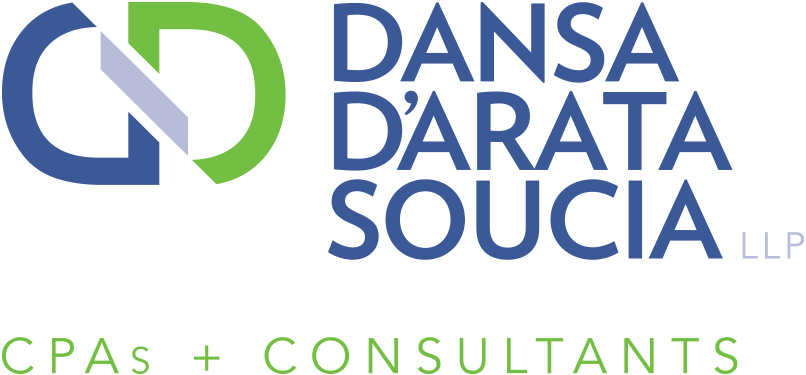Could your next business loan get “ratio’d”?
 We live and work in an era of big data. Banks are active participants, keeping a keen eye on metrics that help them accurately estimate risk of default.
We live and work in an era of big data. Banks are active participants, keeping a keen eye on metrics that help them accurately estimate risk of default.
As you look for a loan, try to find out how each bank will evaluate your default probability. Many do so using spreadsheets that track multiple financial ratios. When one of these key ratios goes askew, a red flag goes up on their end — and the loan may be denied.
Common metrics
To avoid getting “ratio’d” in this manner, business owners should familiarize themselves with some of the more common metrics that banks use to gauge creditworthiness.
For example, banks will compare cash and receivables to current liabilities. If this ratio starts slipping, you’ll likely need to push accounts receivable so money comes in more quickly or better manage inventory to keep cash flow moving. Other examples of financial benchmarks include:
- Gross margin [(revenue – cost of sales) / revenue],
- Current ratio (current assets / current liabilities),
- Total asset turnover ratio (annual revenue / total assets), and
- Interest coverage ratio (earnings before interest and taxes / interest expense).
Some banks may also calculate company- or industry-specific performance metrics. For instance, a warehouse might report daily shipments or inventory turnover, not just total asset turnover. Meanwhile, a retailer might provide sales graphs that highlight product mixes, sales rep performance, daily units sold and variances over the same week’s sales from the previous year.
Other methods
Bear in mind that not every bank uses ratios to evaluate performance, or they may combine ratio analysis with other benchmarking tools. Some use community-based scoring, by which a selected group of finance professionals rate and review companies based on their payment histories. Others use proprietary commercial-scoring models that use creditor reports to develop credit scores for businesses.
Preventing disappointment
When a strategic initiative fails to launch because your business can’t obtain financing, it can be crushing. To prevent such disappointment, have your financials in order and target as many common ratios as possible. Please contact our firm for help evaluating your performance and determining where you may need to improve to obtain a loan.
© 2018



 When a business decides to hold a retreat for its employees, the first question to be answered usually isn’t “What’s our agenda?” or “Whom should we invite as a guest speaker?” Rather, the first item on the table is, “Where should we have it?”
When a business decides to hold a retreat for its employees, the first question to be answered usually isn’t “What’s our agenda?” or “Whom should we invite as a guest speaker?” Rather, the first item on the table is, “Where should we have it?” Home ownership is a key element of the American dream for many, and the U.S. tax code includes many tax breaks that help support this dream. If you own a home, you may be eligible for several valuable breaks when you file your 2017 return. But under the Tax Cuts and Jobs Act, your home-related breaks may not be as valuable when you file your 2018 return next year.
Home ownership is a key element of the American dream for many, and the U.S. tax code includes many tax breaks that help support this dream. If you own a home, you may be eligible for several valuable breaks when you file your 2017 return. But under the Tax Cuts and Jobs Act, your home-related breaks may not be as valuable when you file your 2018 return next year. If you suffered damage to your home or personal property last year, you may be able to deduct these “casualty” losses on your 2017 federal income tax return. For 2018 through 2025, however, the Tax Cuts and Jobs Act suspends this deduction except for losses due to an event officially declared a disaster by the President.
If you suffered damage to your home or personal property last year, you may be able to deduct these “casualty” losses on your 2017 federal income tax return. For 2018 through 2025, however, the Tax Cuts and Jobs Act suspends this deduction except for losses due to an event officially declared a disaster by the President. Whether you’re claiming charitable deductions on your 2017 return or planning your donations for 2018, be sure you know how much you’re allowed to deduct. Your deduction depends on more than just the actual amount you donate.
Whether you’re claiming charitable deductions on your 2017 return or planning your donations for 2018, be sure you know how much you’re allowed to deduct. Your deduction depends on more than just the actual amount you donate. Recently a number of states have changed their Business Tax Laws in an effort to capture business economic activity conducted in their respective states and subject such activity to income tax. “Nexus” is referred to as the standard which, when satisfied, will subject a business to file and pay income taxes in a state. Prior to the ever evolving world of technology in which we currently exist, nexus was commonly satisfied for almost all states when there was some form of “physical presence” in the state (i.e. an out of state business that had offices, employees, agents, or property in the state). As a result of e-commerce and other technological advances, the “physical presence” test traditionally applied as the standard for capturing out of state business activities has become outdated and has resulted in many states changing their approach to an “economic presence” standard.
Recently a number of states have changed their Business Tax Laws in an effort to capture business economic activity conducted in their respective states and subject such activity to income tax. “Nexus” is referred to as the standard which, when satisfied, will subject a business to file and pay income taxes in a state. Prior to the ever evolving world of technology in which we currently exist, nexus was commonly satisfied for almost all states when there was some form of “physical presence” in the state (i.e. an out of state business that had offices, employees, agents, or property in the state). As a result of e-commerce and other technological advances, the “physical presence” test traditionally applied as the standard for capturing out of state business activities has become outdated and has resulted in many states changing their approach to an “economic presence” standard. Employees tend not to fully appreciate or use their retirement benefits unless their employer communicates with them about the plan clearly and regularly. But workers may miss or ignore your messaging if it all looks and “sounds” the same. That’s why you might want to consider getting more creative. Consider these ideas:
Employees tend not to fully appreciate or use their retirement benefits unless their employer communicates with them about the plan clearly and regularly. But workers may miss or ignore your messaging if it all looks and “sounds” the same. That’s why you might want to consider getting more creative. Consider these ideas: If you purchased qualifying property by December 31, 2017, you may be able to take advantage of Section 179 expensing on your 2017 tax return. You’ll also want to keep this tax break in mind in your property purchase planning, because the Tax Cuts and Jobs Act (TCJA), signed into law this past December, significantly enhances it beginning in 2018.
If you purchased qualifying property by December 31, 2017, you may be able to take advantage of Section 179 expensing on your 2017 tax return. You’ll also want to keep this tax break in mind in your property purchase planning, because the Tax Cuts and Jobs Act (TCJA), signed into law this past December, significantly enhances it beginning in 2018.